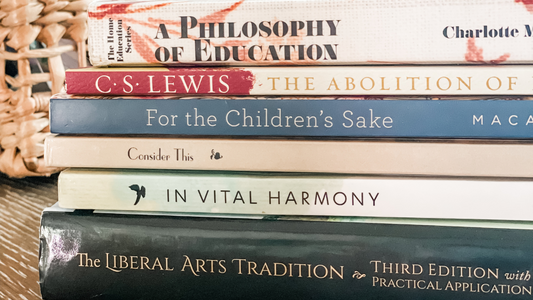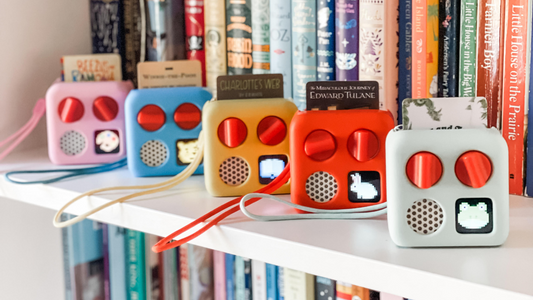“We must open books to children, the best books.”
-Charlotte Mason
Charlotte Mason was an 19th century British educator who invested her life in educating children. Her teachings have inspired a beautiful, rich philosophy that is used by many homeschooling families today. Her writings are valuable and insightful for us home educators, as her ideas can be implemented in our homes in various ways.
One key aspect of her teaching included the use of living books in a home education environment.
What is a living book?
Simply put, a living book brings a subject to life. It engages the reader by bringing them into the story and presenting inspiring ideas. They are often written in narrative form, allowing the reader to step into the story.
Have you ever read a story that made you long to know more? One that captivated you and brought you into the world of the author?
These kinds of books spark something inside of us—learning comes alive and we develop an appetite for the story. These books stay with us and, years later, we remember the story because we became a part of it.
As Miss Mason said: “One more thing is of vital importance; children must have books, living books; the best are not too good for them; anything less than the best is not good enough.”
What an incredible statement—the very best books are not too good for our children! They are worthy of the most beautiful, well-written books and ideas to encourage them, inspire them, and teach them.
Living books in the homeschool room
Stories are powerful. The words we read on a page (or hear in our ears) build worlds. How delightful is a homeschool room where inspiring books breathe life into the children?
Beautiful, living books can be used to bring education to life, no matter the curriculum choice. Instead of a traditional textbook, a living book allows the reader to step into the timeframe they are studying and to see the world through the character’s eyes.
Additionally, a literature-based approach can inspire children of all ages, temperaments, and personalities. From reluctant readers to wild wigglers, excellent stories engage the reader and ignite ideas within their heart and mind.
What makes a living book?
Living books are often written by authors who are experts in their fields. They are passionate about the subject, and this enthusiasm pours forth onto each page as they long to share this knowledge with the world. These books use engaging language and do not talk down to their readers.
A few questions to consider when searching for living books:
-Is it written in narrative form?
-Is the language engaging? Or does it oversimplify and talk down?
-Is the author knowledgeable and passionate?
-Is it filled with ideas—or simply dry facts?
-Do I as the parent want to read this book?
How living books have benefited my homeschool
As a mama of five wild young boys, homeschool can feel like a struggle some days. They would rather be running outside, building forts out of couch cushions, or creating LEGO masterpieces than sitting down to do school. (Can you blame them?)
Yet, something magical happens when I pull out a living book and begin to read.
These stories truly bring subjects to life. They show how reading can be enjoyable and how learning can be a delight. These books inspire ideas within us and pull us into their world.
I’m always amazed at how these books stay with my children. Months or even years later, they will still recall ideas or aspects of the stories we read. These books not only bring ideas to life, but they continue to live within us as well.
Written words create beautiful worlds. We have a beautiful opportunity before us to lead our children into those worlds and learn together.
Note: This article originally appeared at Learn and Live Letter.





